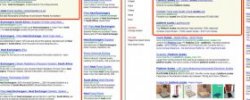Search
SEO Benefits To Promote Your Website

Once again you need to check the ranking indicators of your web project by some keyword. And you realize that a direct competitor somehow got to a higher...
Read MoreGoogle AdWords South Africa

Google restricts the promotion of alcoholic beverages and drinks that resemble alcoholic beverages. When promoting alcoholic beverages, you may not do...
Read MoreEquestrian and promotion

Of course, all those who are just thinking about promoting their sites understand that SEO is good , promotion is beneficial , especially when you look...
Read MoreInternet Marketing ads

10 Marketing Predictions for 2015 [INFOGRAPHIC] – There have been many changes in the digital marketing space over 2014, and that has marketers preparing...
Read MoreAdWords platform

The Effectiveness of Google Ads “Why use AdWords” and Does Google AdWords Work? are pretty common keyword phrase searched on Google, which suggests that...
Read More